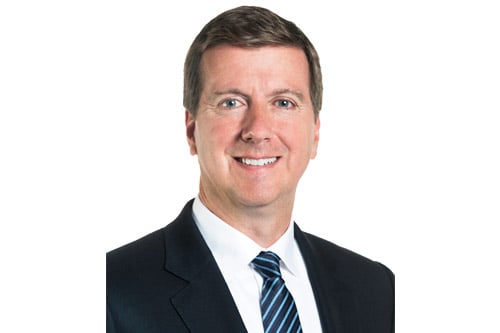Mackenzie Investments president and CEO Barry McInerney discusses the evolution of asset management in Canada

CEOs TEND to hold strong ideas about how a company should be run. This can cause disruption whenever there’s a change in leadership, but there were no such worries for Mackenzie Investments when Barry McInerney replaced Jeff Carney as head of the firm in 2016.
The asset manager, a subsidiary of IGM Financial and part of the Power Corporation of Canada family, was already going through a transitional period at the time, but McInerney was fully on board with the changes being made to update the brand. Now approaching his second anniversary as president and CEO, he reflects on how the job continues to excite and challenge him.
“I’ve been in the investment industry over 25 years, half in Canada and half in the United States, and the pace of change always amazes me,” McInerney says. “Although we are executing on a strategy and doing it well, the environment shifts very quickly. However, we pride ourselves on our ability to pivot and adapt to the changing environment to the benefit of the Canadian investor.”
The year McInerney came on board – 2016 – was a pivotal time for Mackenzie. The firm entered the ETF space that year, and later emphasized its global aspirations by buying a 10% stake in one of China’s leading asset managers, China Asset Management Co. Since then, Mackenzie has expanded its ETF suite to 15 funds while increasing its stake in China AMC to 13.9%. That partnership led to the launch of the All China Equity Fund this past October, offering Canadian investors greater access to the world’s second largest economy.
Exploring new avenues of business will continue to be a priority for Mackenzie as the investment landscape shifts considerably. “The baby boomers continue to drive the wealth and asset management business in Canada, although the older boomers are in the decumulation phase,” McInerney says. “But we are also very sensitive to the needs of millennials and women investors, who are increasing their control of investable assets.”
Sensitive in this case means a leadership fund that tracks a global women’s index, as well as a new sustainable, responsible and impact [SRI] fund that is sure to curry favour with millennials.
“We are the fastest-growing ETF platform in Canada in terms of percentage growth,” McInerney says. “We are at $1.3 billion in AUM – the second fastest to reach a billion after BMO. In the products we have launched and will continue to launch, we want to be highly differentiated.”
Most recently, this meant the launch of four new ETFs: the Mackenzie Ivy Global Equity ETF (MIVG), Mackenzie Canadian Short Term Fixed Income ETF (MCSB), Mackenzie Global Leadership Impact ETF (MWMN) and Mackenzie Portfolio Completion ETF (MPCF).
McInerney sees the firm today as having evolved into a diversified investment management solutions provider, offering mutual funds, ETFs, pooled funds, SMAs and many other capabilities across all asset classes. The success of its ETF platform proves that there is advisor and investor demand for the type of ETF solutions that Mackenzie provides.
“In the US, there are projections for the ETF industry to catch up in size to mutual funds,” McInerney says. “The ratio now is about five to one – US$15 trillion to about US$3 trillion. In Canada, the ratio is around 10 to one – approximately $1.4 trillion for mutual funds and $140 billion in ETFs. ETFs are growing faster, but mutual funds are still growing in Canada as well. We want to be leaders in both.”
It’s a lofty aim, but one that’s totally achievable, in McInerney’s opinion. In its 50 years in operation, Mackenzie has seen many of its competitors come and go, but it remains in a strong position to last another 50 and more. Consolidation is an ongoing trend in the industry, but with IGM Financial as its parent company, Mackenzie holds a healthy competitive advantage over many\ other firms.
“In the asset management industry, success is hinging more on scale,” McInerney says. “When you invest to build out your capabilities, your platforms, your technology, you are able to develop and offer the best solutions to your customers. There are well documented regulatory pressures we are dealing with in Canada, as well as pricing pressures, and that means an increased need to grow your scale in order to continue to lead the market with innovative solutions.”
“We present ourselves to advisors as a business partner,” he says. “We want to help make them the best they can be because our interests are aligned in meeting the financial goals of the end investor. We expect shelves to shrink for advisors going forward as they partner up with a smaller amount of firms – those that have demonstrated they can innovate with relevant solutions.”
In that respect, he believes Canadian advisors will more closely mirror those in the US, with larger and much more sophisticated books of business. No industry can hold back change, and wealth management is no different.
“We think that human advice will continue to be the cornerstone of the retirement and wealth business in Canada,” McInerney says. “Advisors can use technology more effectively to service their clients, but there will be a convergence of technology and advice.”



